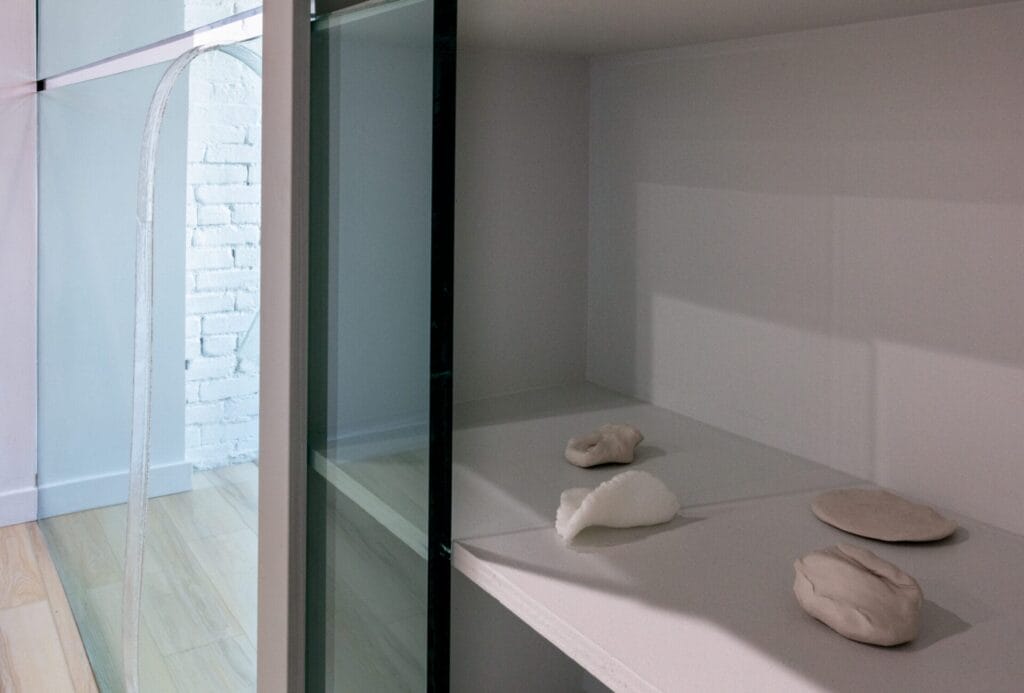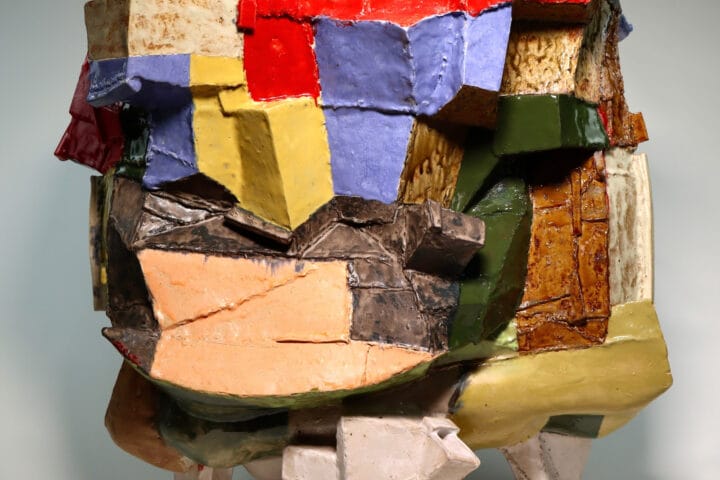In her first solo exhibition in the US, Doreen Chan (b. 1987, Hong Kong) finds in dreams a medium for human connection and a communal language. As the title of her show expresses, for Chan dreams provide another room–“a space that is real for the dreamer, not fake,” in her words, or illusionary–but is instead a tangible, psychological realm that allows for a better understanding of how individual experiences, memories, major life changes, and daily routines, are shared by others. Further, by working through them, a person’s dreams can impact their perception–of relationships or of the past–altering the course of healing or shaping new trajectories.

This ongoing participatory project grew out of a body of work that began as a response to Chan’s vivid, rapid dreaming in the context of the 2019 Hong Kong protests around the government’s draconian Fugitive Offenders bill amendment, limiting the freedom of political dissenters where the artist grew up. Following the stay-at-home order during the COVID-19 pandemic, the artist’s consideration of dreams morphed into HalfDream. This project explores commonalities at a time of political polarization–how psychological experiences and very real states of instability, displacement, and isolation, recur throughout the unconscious inner worlds of many. Removing her narrative or a particular city as central protagonist in this exhibition, Chan sets into motion a system for gathering and sharing the ephemeral, idiosyncratic dreams of the collective, transforming them into artwork with the participants, and asking visitors to reflect on their own dreams.
During her residency in Pittsburgh, Chan has worked closely with local groups and classrooms to “collect” dreams, as she describes, and identify resonant content. While HalfDream incorporates an online archive of these dreams with anonymous contributions, the artist parses and pairs the individual dreams herself. Bringing this archive together with new sculpture and multi-media work, the resulting exhibition on view situates the viewer decidedly between the physical and immaterial, personal and collective.
In a three-channel video, three of the dreamers revisit, express, and analyze important relationships, from childhood trauma to potential loss of a friendship. Here, Chan assumes the role of facilitator and mixologist, inviting participants to talk through dream content and associations through visceral blends evoking related places, smells, and tastes. Other parts of the show take the form of abstract sculptures and wall-based works fusing dream landscapes held in common by multiple participants. “Is somebody else here? And who are they?” is a suspicion that runs throughout, as the curvature of a seat suggests a missing body, or the sound of footsteps from above reminds us we are not alone.
Taken together, the works presented are embedded with stories of humor and grief, family relationships, and the passage of time. These themes have occupied Chan’s practice previously but here shift into deeply considered collaborations with others. Throughout the exhibition, dreams become a common language to communally make sense of social events, everyday phenomena, or tragedy. And through the subtlest interventions, Chan’s installation refuses to mimic qualities of dreaminess, but instead suggests an evocative laboratory for engaging that which evades, and connects, all of us.
HalfDream: Another Room will be on view through fall 2023. During the run of the exhibition Chan will return to Pittsburgh and invite some dreamers to revisit their submissions and create artworks based on their dreams with her in the gallery. To participate, share your dreams on HalfDream.org.












